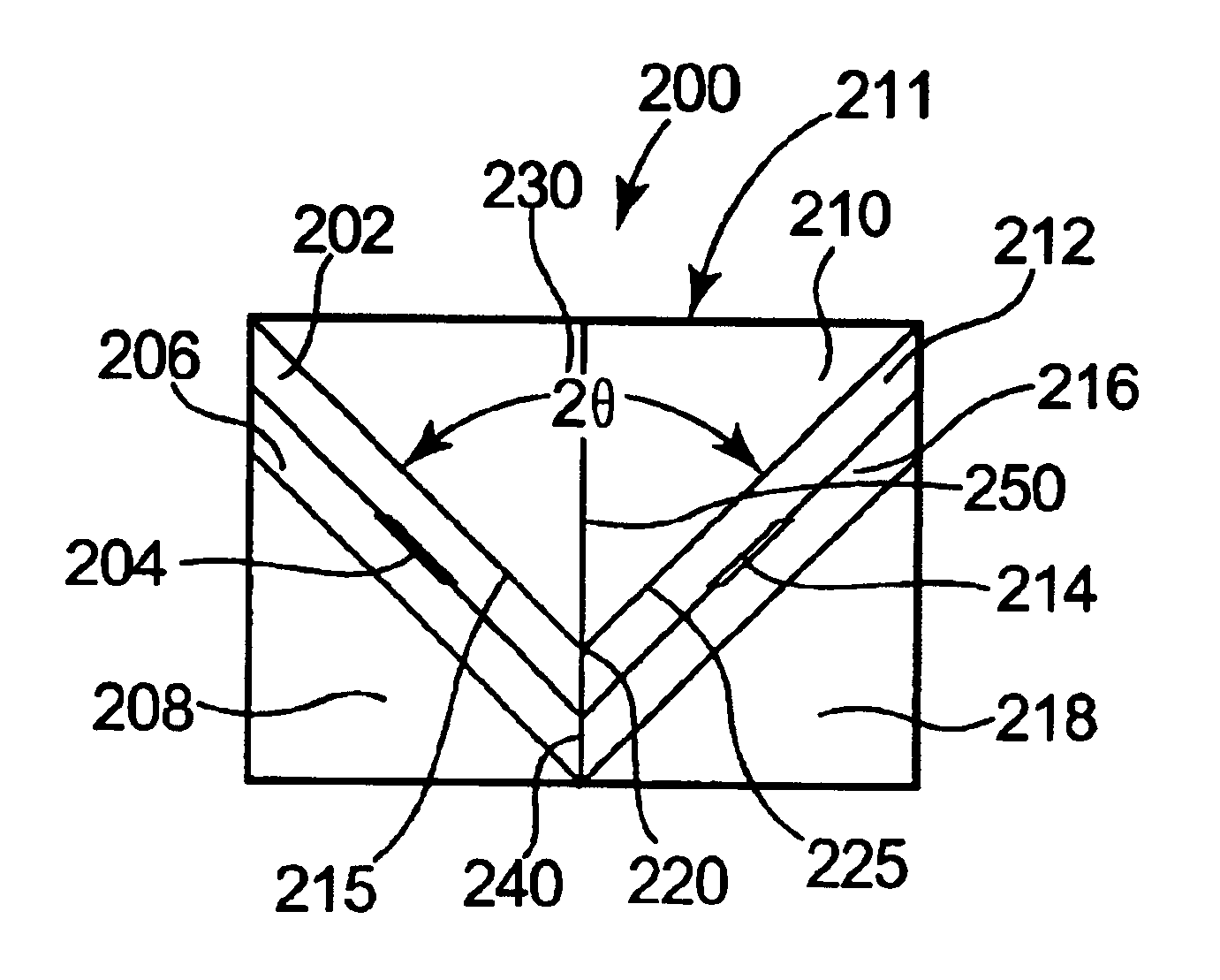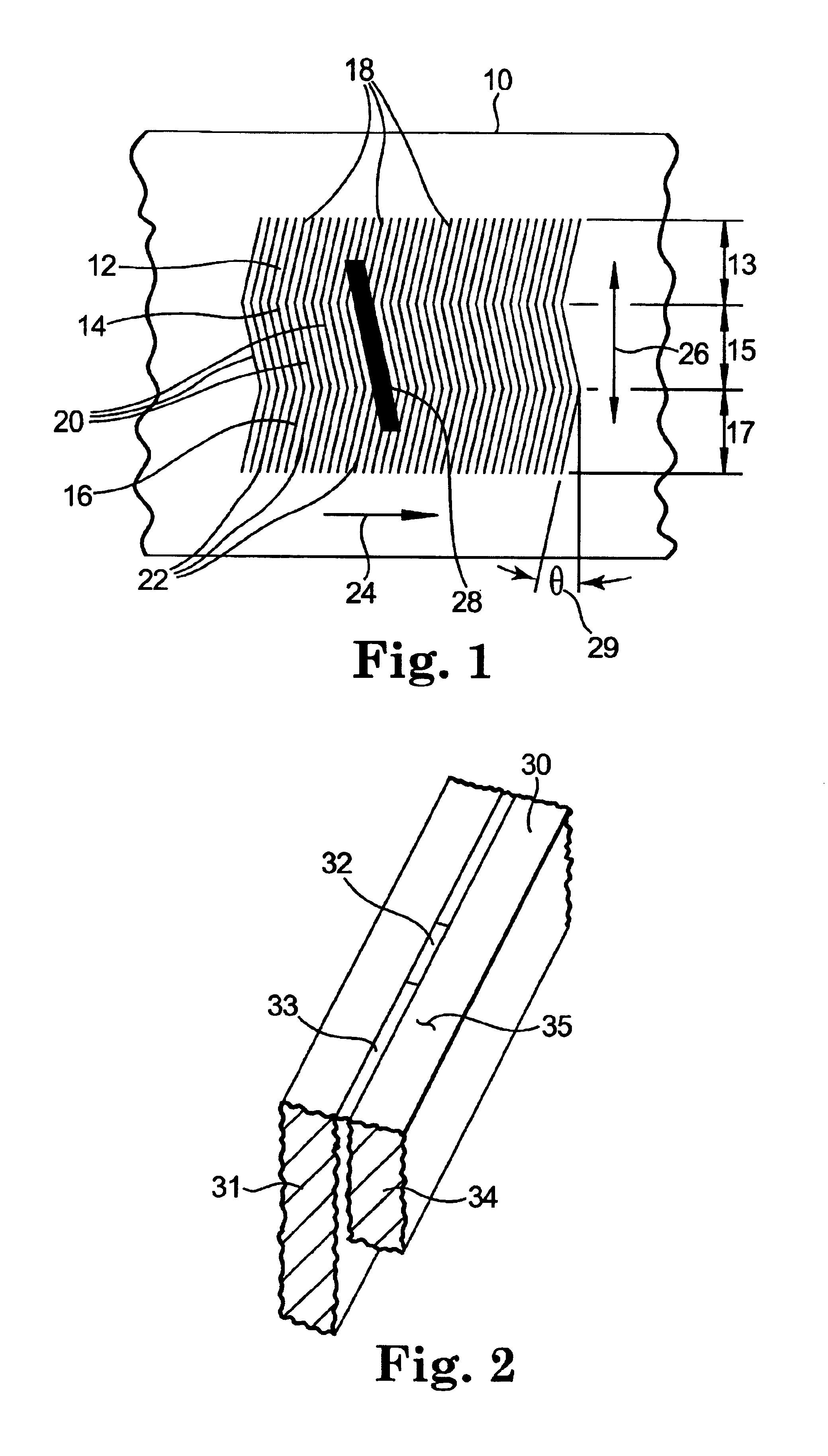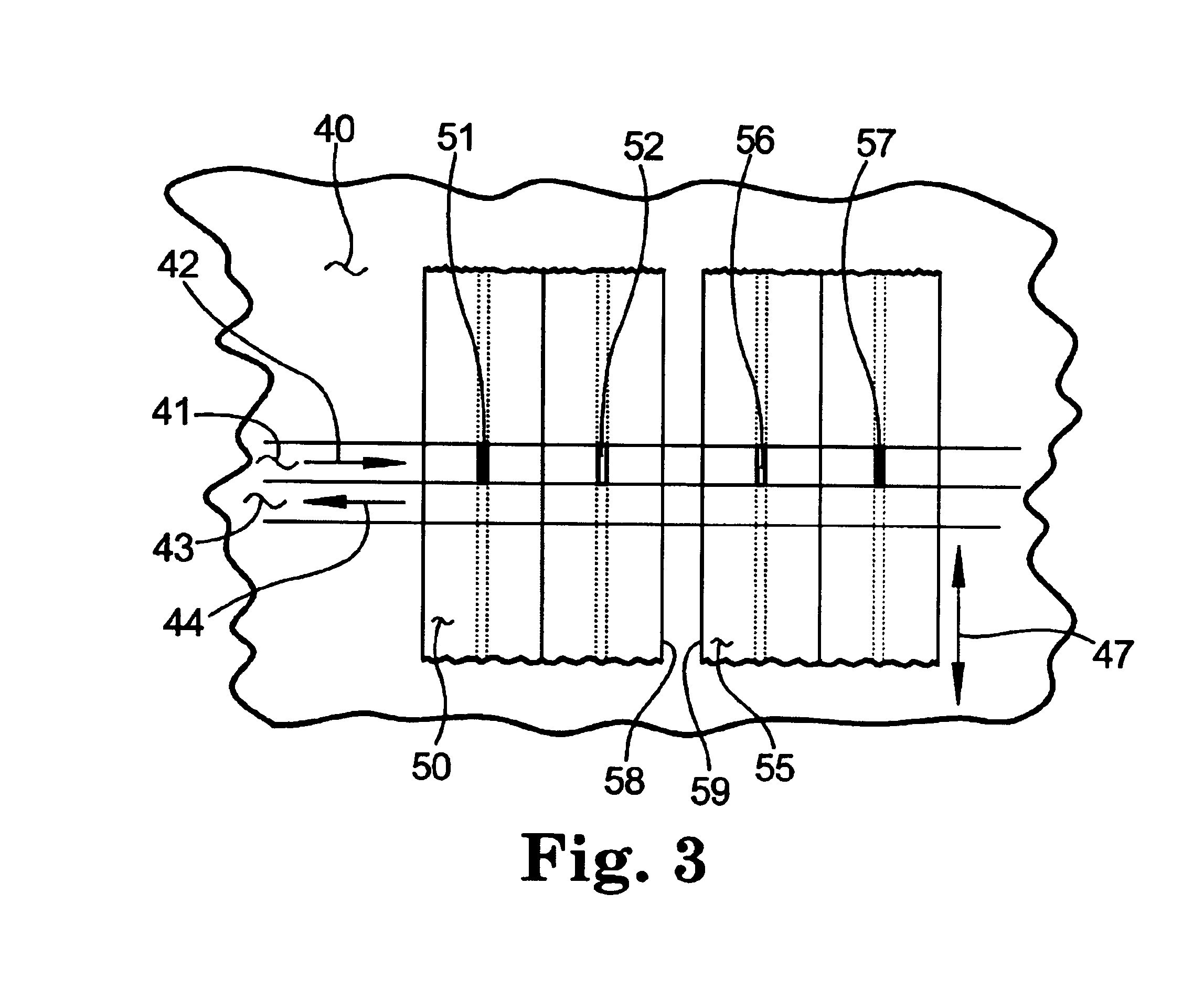Large angle azimuth recording and head configurations
a technology of large angle azimuth and recording head, which is applied in the field of magnetic storage recording techniques and devices, can solve the problems of exponential increase of error rate, narrow data track, and increase of possibility of erroneous data transfer, so as to substantially suppress or eliminate an adjacent track signal, and increase the overall tape data storage density
- Summary
- Abstract
- Description
- Claims
- Application Information
AI Technical Summary
Benefits of technology
Problems solved by technology
Method used
Image
Examples
Embodiment Construction
[0044]The present invention is premised upon the discovery that by increasing azimuth angle, data storage density for a given tape width can be increased significantly more than the cosine θ loss in linear track density, as discussed above in the Background Section, allowing a greater increase in areal density than is possible with orthogonal or conventional azimuth recording. In particular, using an azimuth angle that is higher than current azimuth recording techniques, preferably over 30 degrees, and most preferably at or near 45 degrees, can substantially reduce or eliminate all undesirable side track signals and allowing the read transducer to be extended to two times or more of the data track width. The size of the read transducer would be effectively limited, however, by any further track of a similar transitional azimuth (i.e. by the track after the adjacent one). A large angle azimuth data track in accordance with the present invention can be advantageously decreased in widt...
PUM
 Login to View More
Login to View More Abstract
Description
Claims
Application Information
 Login to View More
Login to View More - R&D
- Intellectual Property
- Life Sciences
- Materials
- Tech Scout
- Unparalleled Data Quality
- Higher Quality Content
- 60% Fewer Hallucinations
Browse by: Latest US Patents, China's latest patents, Technical Efficacy Thesaurus, Application Domain, Technology Topic, Popular Technical Reports.
© 2025 PatSnap. All rights reserved.Legal|Privacy policy|Modern Slavery Act Transparency Statement|Sitemap|About US| Contact US: help@patsnap.com



